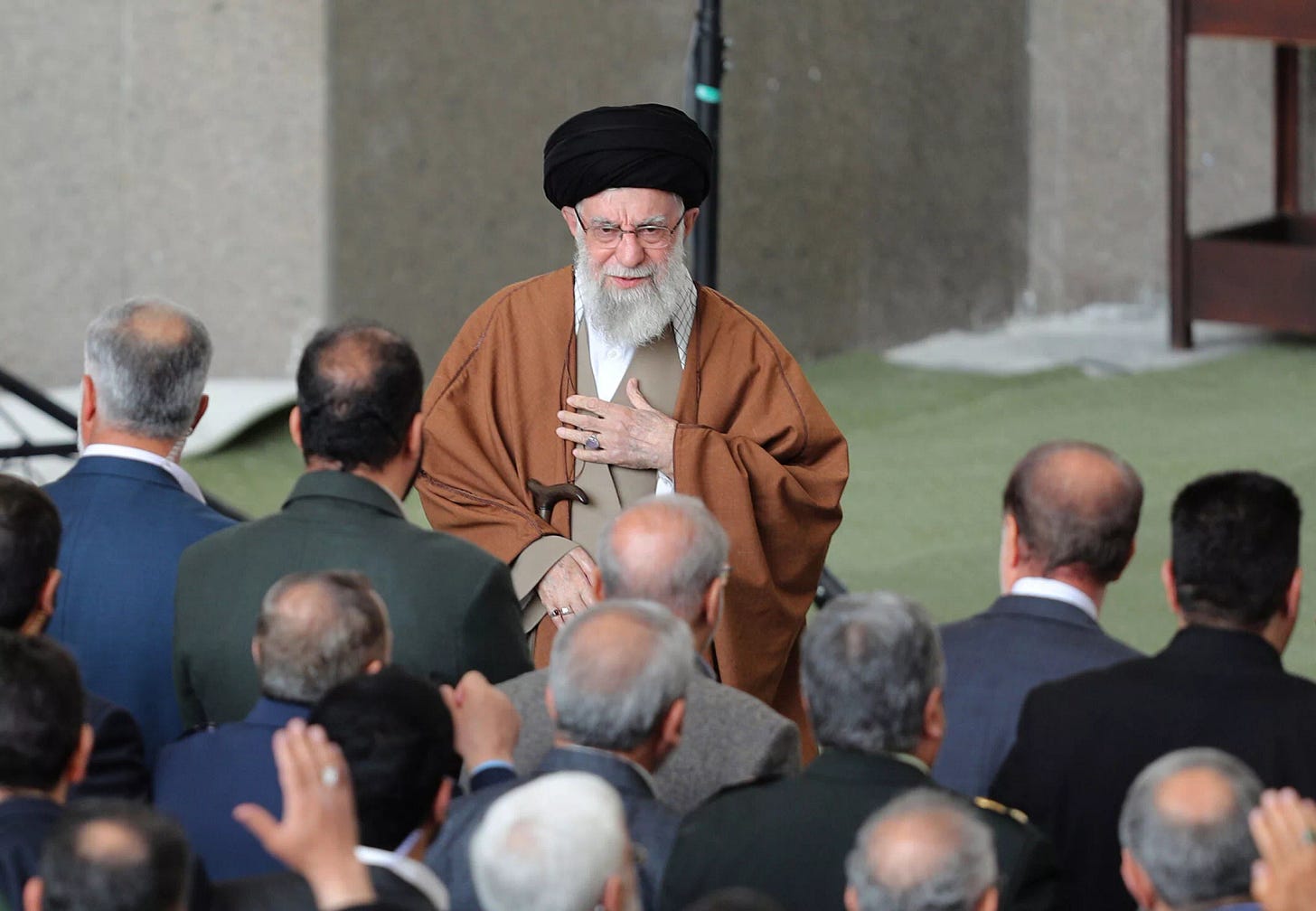In recent months, Iran has suffered a series of setbacks — from the assassination of a generation of Revolutionary Guard commanders and several nuclear scientists, to Hezbollah’s weakening capabilities and the fall of the Assad regime, alongside mounting efforts in Iraq and Lebanon to curtail Tehran’s militia influence. At home, the June 2025 war with Israel has placed unprecedented pressure on the Iranian regime.
With the fate of the nuclear deal with the United States in limbo, and the diminishing effectiveness of its regional proxies, Tehran faces a profound strategic crisis — one many observers view as a turning point that could redefine the Islamic Republic’s trajectory for decades.
Against this backdrop, NoonPost examines the contours and evolution of Iran’s strategy over the past four and a half decades through Iran’s Grand Strategy: A Political History by scholar Vali Nasr — one of the most significant contemporary contributions to understanding Tehran’s geopolitical outlook and strategic logic.
Vali Nasr, a seasoned adviser to US policymakers and current director of the “Rethinking Iran” initiative at Johns Hopkins University, offers far more than a chronology of Iran’s foreign conduct in his mid-2025 Princeton University Press volume. He probes the deeper structures shaping Iranian strategic decision-making.
At the core of his inquiry lies a question: Does Iran pursue a conscious, coherent grand strategy, or are its decisions driven by ideology and reactive impulses? Drawing on archival sources, interviews with Iranian officials, speeches by its leaders, and case studies of pivotal moments.
Nasr pushes beyond simplistic readings that reduce Iran’s strategy to religion and ideology, highlighting instead the interplay between expansionist ambitions and acute security anxieties — a calculus aimed at safeguarding the homeland while sustaining regional influence.
Geography of Encirclement and the Memory of Humiliation
Nasr traces Iran’s sense of exceptionalism and threat to its Shi’a Persian identity forged under the Safavid dynasty (1501–1722), which set it apart from its Sunni surroundings. This legacy fostered expansionist aspirations while deepening geopolitical isolation.
Added to this was a historical consciousness of foreign incursions — from 19th-century defeats to Russia, to the Anglo-Soviet occupation in World War II, and the 1953 coup against Prime Minister Mohammad Mossadegh — cementing a defensive nationalism that culminated in the 1979 Islamic Revolution.
Ayatollah Ruhollah Khomeini’s insistence on “independence” — literally handwritten into the revolution’s founding declaration — became the republic’s ideological and strategic cornerstone, cast as liberation from centuries of subjugation, particularly to the United States. Even on his deathbed, Khomeini reiterated independence as the republic’s bedrock.
To this day, Iran’s leaders portray themselves as having secured the nation’s first true sovereignty in centuries — a narrative feeding a collective memory of encirclement and foreign threat that continues to define national security doctrine.
From “Sacred Defense” to “Forward Defense”
The Iran–Iraq War (1980–88) — one of the longest and bloodiest of the 20th century — left up to 250,000 Iranians dead and millions displaced, consuming two-thirds of the national budget by its final year. Nasr argues this conflict shaped modern Iranian strategy even more than the revolution itself, institutionalizing the Revolutionary Guard and Basij militias, and enshrining the “Sacred Defense” doctrine — a fusion of religious ideology and nationalist survivalism.
By 1992, faced with regional isolation and sobered by the US military’s swift destruction of Saddam Hussein’s forces in the Gulf War, Iran unveiled its first formal national strategy: “Forward Defense.” This unconventional approach shifted battle lines beyond Iran’s borders through proxy networks, missile and cyber capabilities, and ideological alliances — projecting influence into the Arab world to pre-empt threats.
This doctrine, executed chiefly by the Quds Force under Qassem Soleimani from 2003, enabled Tehran to entrench itself in Iraq, Syria, Lebanon, and Yemen, forming the so-called “Axis of Resistance.” It later expanded into a “Shi’a defense” — framing the protection of holy shrines and Shi’a communities in Syria, Iraq, and beyond as integral to Iranian security.
Expansion, Overreach, and Backlash
While “Forward Defense” secured significant regional leverage — peaking during the Arab uprisings — it also entrenched costly commitments. Iran’s nuclear program, rooted in the Shah’s modernization agenda but reframed after 1979 as a deterrent, became both bargaining chip and flashpoint. The 2015 nuclear deal temporarily eased sanctions but left Iran’s regional strategy untouched.
By the early 2020s, however, this posture began to fray. The collapse of Hezbollah’s deterrent capacity, loss of the Assad regime, and US–Israeli strikes on nuclear facilities eroded Iran’s strategic depth. Domestic discontent — particularly among a younger generation more focused on economic stability than revolutionary export — further weakened support.
Nasr contends that without popular legitimacy, “Forward Defense” is unsustainable. Meanwhile, demographic shifts, the absence of a clear successor to Supreme Leader Ali Khamenei, and the regime’s inability to wage large-scale conventional war point toward heavier reliance on missiles, drones, and potentially a nuclear deterrent.
For Iran, victory is measured not by decisive battlefield triumphs but by survival against superior foes. Yet Nasr concludes that the Islamic Republic’s endurance now depends less on stubborn resistance than on a strategic recalibration combining domestic reform with more restrained regional ambitions. Without such a shift, the very foundations of the regime may erode. In Nasr’s words, Iran must learn to show “the flexibility of the fox.”



